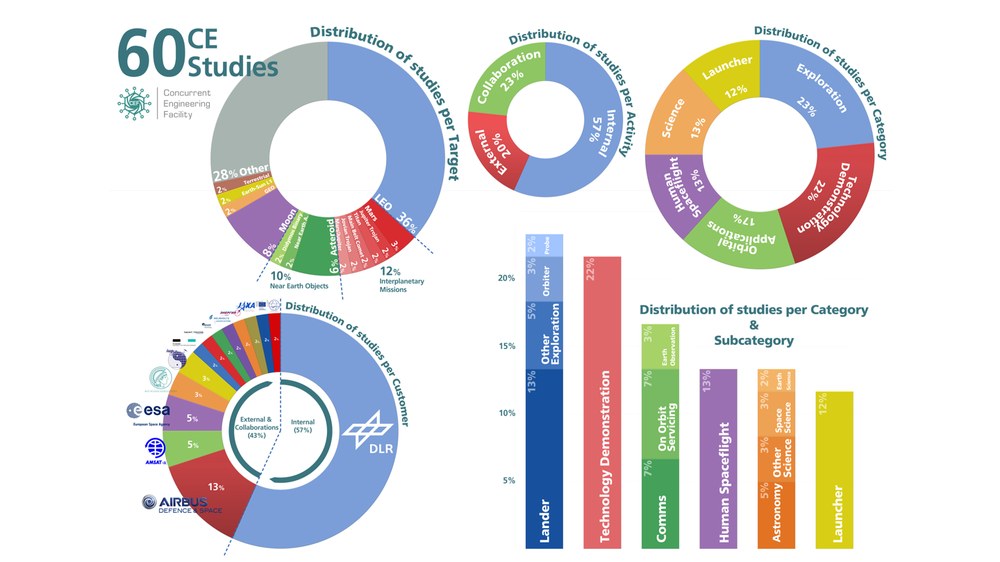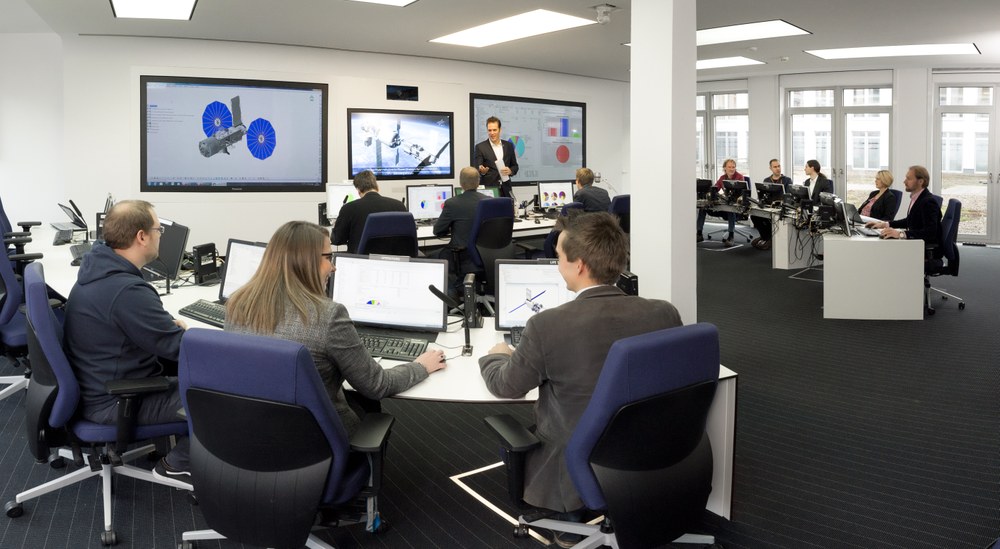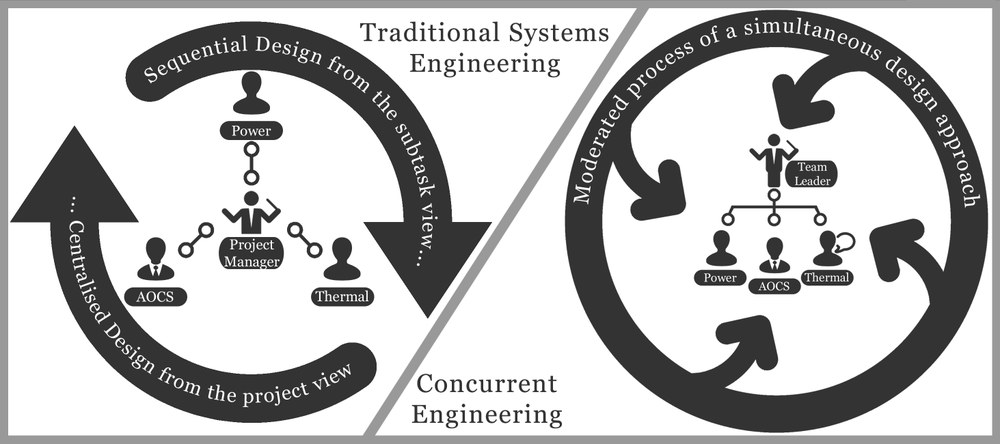Concurrent Engineering Facility



The Concurrent Engineering (CE) Process
Concurrent Engineering is a process focussed on optimising engineering design cycles, which complements and partially replaces the traditional sequential design-flow by integrating multidisciplinary teams that work collectively and in parallel, at the same site, with the objective of performing the design in the most efficient and consistent way as possible, right from the beginning.

Working within a guided process, the concurrent access of all experts to a shared database, and the direct verbal and medial communication between all subsystem experts, are the defining characteristics of Concurrent Engineering studies. The major advantages of the CE process are:
- very high efficiencies regarding cost and project outcome activity in early design phases,
- close-quarters collaboration which facilitates direct communication and quick data exchange,
- that team members can easily track the design progress, which also increases the project understanding and identification,
- and that ideas and issues can be discussed in groups, which bring new viewpoints and possible solutions, as well as assists in the identification and avoidance of mistakes.
The Concurrent Engineering Facility (CEF)
The CEF is DLR’s systems analysis laboratory where CE studies are conducted, providing the necessary environment and tools to implement the CE process. The CEF facilitates simultaneous access to a common set of data, as well as direct verbal and medial communication among the different domains during the design process, through the intelligent use of modern tools and communication technologies.
DLR Bremen’s CEF is divided into 3 design rooms with 21 work stations in total and built-in media capabilities. One of these chambers is the “Main Design Room”, where studies are conducted and which allows for up to twelve domains to be included in a study. The other two chambers act as splinter rooms, which are typically used for small-group discussions during unmoderated time in a study, or to accommodate other parallel working groups or auditors.
Our activities
As of 2015 over 50 studies have been conducted in the CEF, maturing the CE process and adapting it to combine the system and domain expertise of DLR and its specific conditions. Although mostly focused on satellite design, exploration missions and space transport systems, the CEF has enabled the study of life support systems, and space-based or terrestrial infrastructures.
Customers, Partners and Collaborators
The CEF is not limited to DLR activities but also open for collaborative or even fully external studies. Current national and international partners and collaborators include various universities, research organisations, space agencies and industry.

